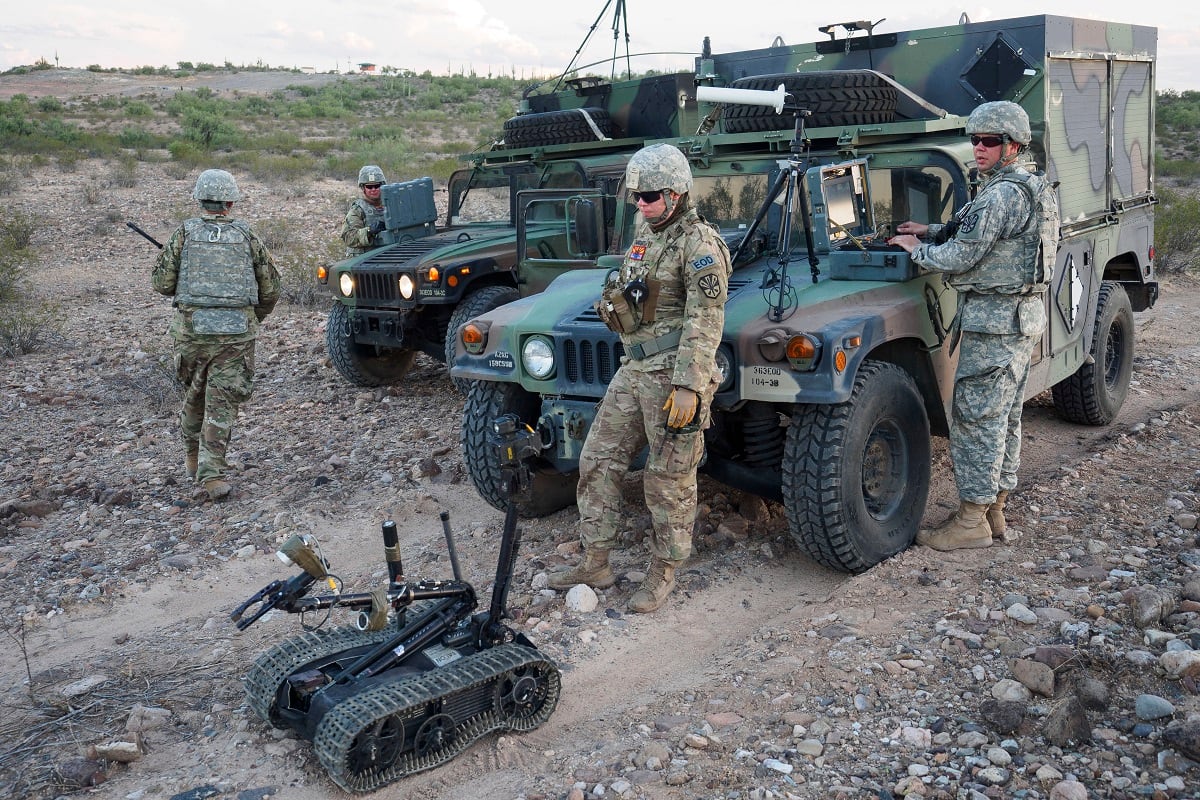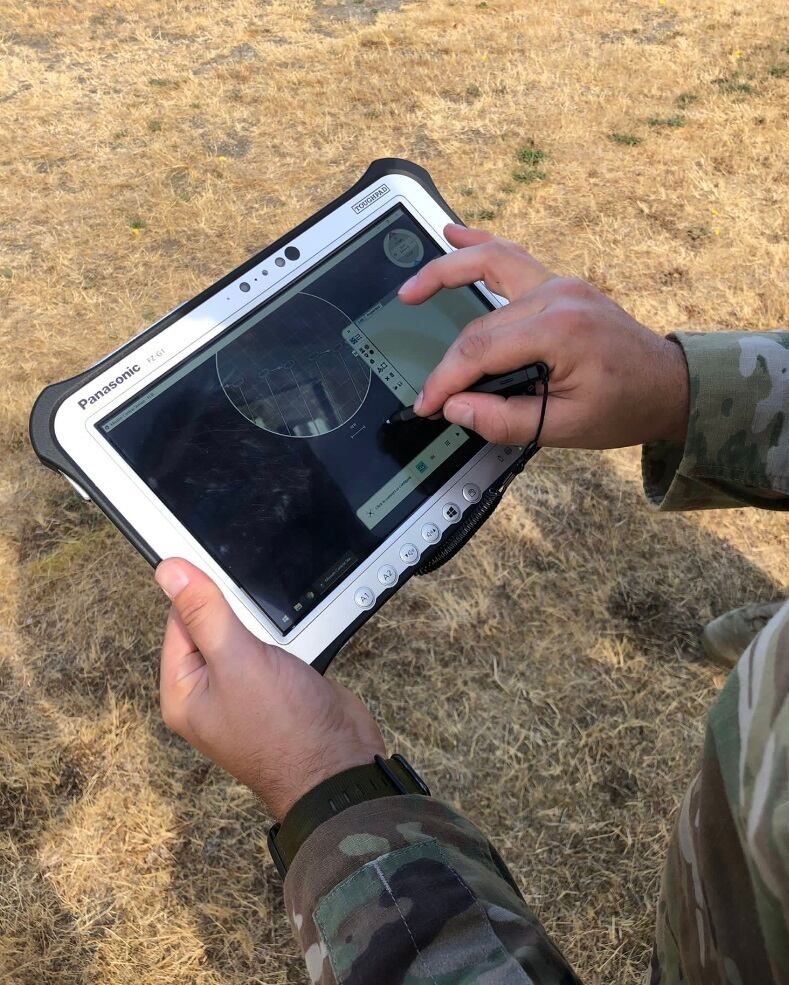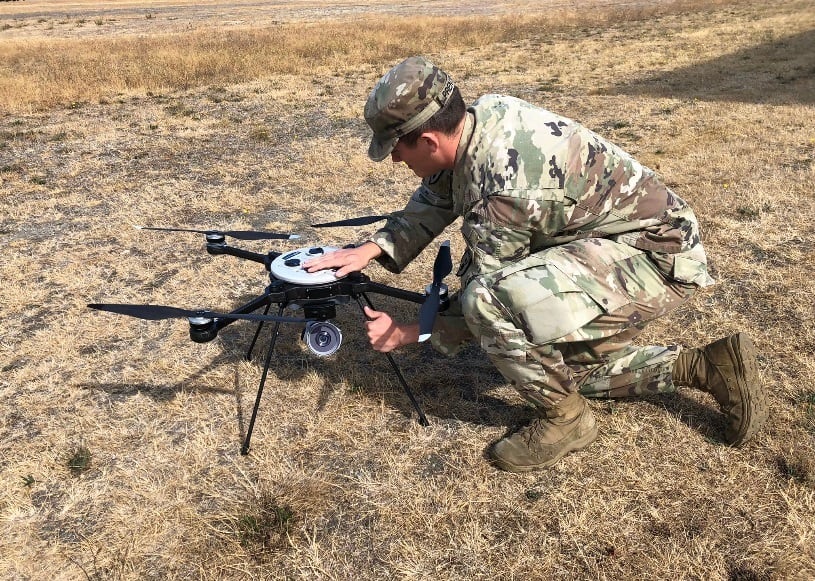Army bomb technicians at Joint Base Lewis-McChord, Washington, were among the first soldiers to test the service’s newest drone.
Soldiers with 707th Ordnance Company tested the Skyraider Unmanned Aerial System at a village in Training Area 4 on JBLM from Aug. 23 to Sept. 2, according to an Army release.
“They can mostly be used for reconnaissance of terrain and to identify possible explosive hazards,” said Capt. William R. Hartman, 707th EOD Company commander.
Hartman’s soldiers were able to connect Light Detection and Ranging tech, or LIDAR, to the drone for better terrain mapping.
RELATED

Hartman, a veteran of several CENTCOM deployments, also said the Explosives Ordnance Disposal technicians have used “throwbots” — throwable robots — to help recon areas where IEDs or other hazardous devices might be present.
The Marine Corps also purchased the Skyraider drone in 2020.
The system weighs about 10lbs, can carry up to 4.4lb and can fly 50km an hour with a maximum range of 8km and an altitude ceiling of 15,000ft, according to the drone’s manufacturer, FLIR.

The 707th falls under 71st EOD Group and 20th Chemical, Biological, Radiological, Nuclear, Explosives, or CBRNE, Command.
As recently as 2018, the Army announced an entirely new kit for its EOD technicians. The new gear included upgrades that address more than threats seen in the Iraq and Afghanistan insurgencies.
The idea, Army Times reported previously, was to have a full EOD capability, not just an IED-tailored kit.
Under the new kit plan, Army EOD teams would have three aerial drones, soldier-borne sensors, tiny “nano” helicopter drones and tethered Unmanned Aerial Sensors at their disposal.
The “enhanced render safe kit” also includes binocular night vision devices, lightweight dismounted X-ray machines, lightweight electronic countermeasures and lightweight mobile detectors for radiation and chemicals.
Initial operating capability was expected by 2021, Army officials said in 2018.
Todd South has written about crime, courts, government and the military for multiple publications since 2004 and was named a 2014 Pulitzer finalist for a co-written project on witness intimidation. Todd is a Marine veteran of the Iraq War.





